Daimler V8 Restoration project
The Daimler was purchased in March 2012. It had been sitting in a relatively dry storage workshop for many years. Although the bodywork at first glance looked reasonable, in reality it needed a fair amount of new metal and panels. There was small moisture blisters in the paintwork on some panels so these layers of paint required removing. Mechanically the engine was sound although the fuel system was in need of a complete overhaul. A new battery had been fitted and after several attempts the engine fired up but would not run for any period. The interior is also in need of renovation work. The brakes had seized on a couple of wheels so it proved difficult to get on a trailer to transport back to Cambridgeshire. The criteria for bodywork repair was to replace any rusted or thin metal by either replacing the panel or Mig welding in new sections.
Engine
After picking up a pair of spare cylinder heads, I decided to change the heads for the reason that the engine was smoky after start up which was a sign of worn valve guides. Also on inspection of the old heads a couple of water galleries were corroding close to the combustion chambers so the new heads were worked on instead with new valve seals fitted (none on old heads). The valves were reground, chambers cleaned and new head gasket fitted. A couple of push rods were found to be bent so they were replaced (difficult to find).
Cooling System
A new water pump was fitted earlier after the original leaked around the main seal. The original radiator core was caked in calcium and although water appeared to flow through it ok, it was replaced with an aluminium import. The original viscous couple fan was found to be defective after I noticed it freewheeling when the engine was hot. An electric cooling fan (see picture right) was fitted with a thermocouple switch control unit. A new thermostat has been fitted. The heater box was removed and the matrix cleaned out with a new heater valve fitted. New heater hoses were fitted along with new ”T” hoses at the inlet manifolds. The original steel heater tubes were corroded and were replaced with 1/2” stainless steel tubes and a 90’ bend from an air con hose.
There was a consistent oil leak from sump and luckily this turned out to be only oil travelling through the thread of sump bolt rather than a crankcase bearing seal failure. New gaskets were fitted to the inlet and the exhaust manifolds.
There was a transmission fluid leak from the seal connected to the speedo drive cable. Also a new gearbox sump gasket was fitted.
Fuel system
As mentioned the fuel system was in a bad way with s lit of muck and rust in the tank and fuel lines. The tank was removed and thoroughly cleaned. New copper fuel lines were fitted with stainless steel Swagelock connectors. The original SU fuel was replaced with an electronic pump while it was renovated but the replacement works so well, I have not changed it back yet although I bought a recon kit from Bullen. The engine ran rich when and this evident by blue smoke from the exhaust. The carbs were balanced and when I found all the parts for an old Gunsons Colourtune, The mixture was weakened to the correct point and the blue smoke disappeared.
The twin SU’s were stripped down and reconditioned with new needles, jets and float valves.
Exhaust System
Most of the exhaust system that came with the car was in reasonable condition, but I did have to renew the balance pipe section which fits between the left and right hand pipes. The down pipes from the exhaust manifolds were quite rusty, so I welded flexible couplings on to the ends of these.
However I later bought a job lot of parts on Ebay which included stainless steel down pipes so these were fitted instead. I also fitted new rubber mounted supports for the exhaust, but they have failed with the rubber coming away from the metal.
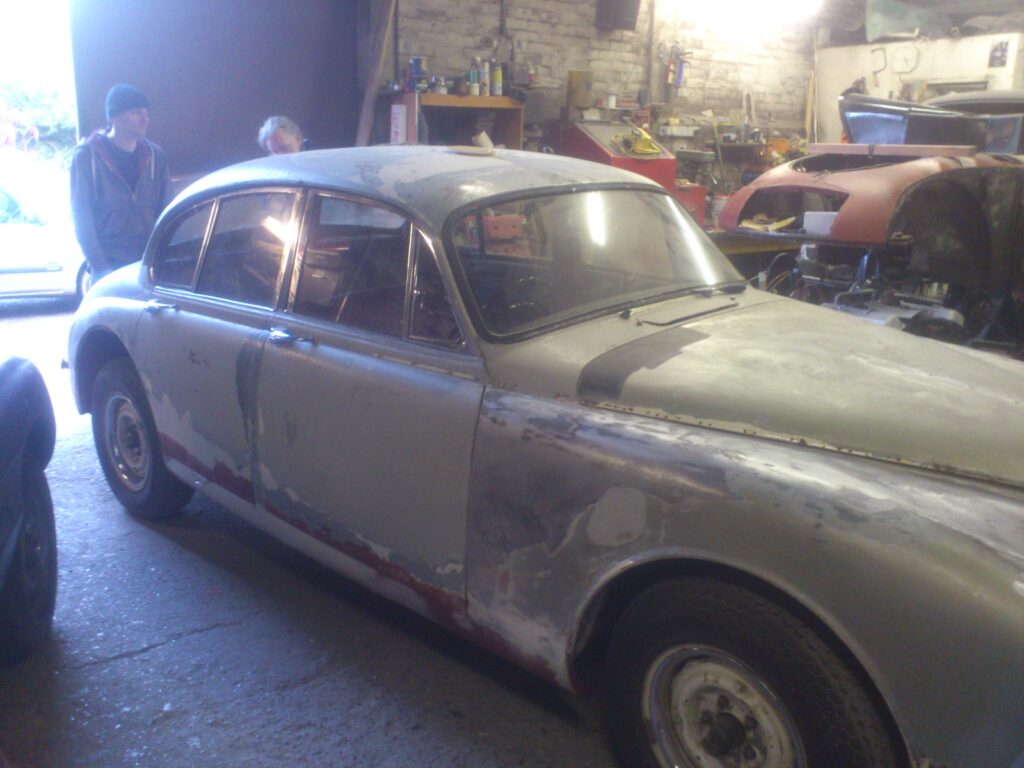
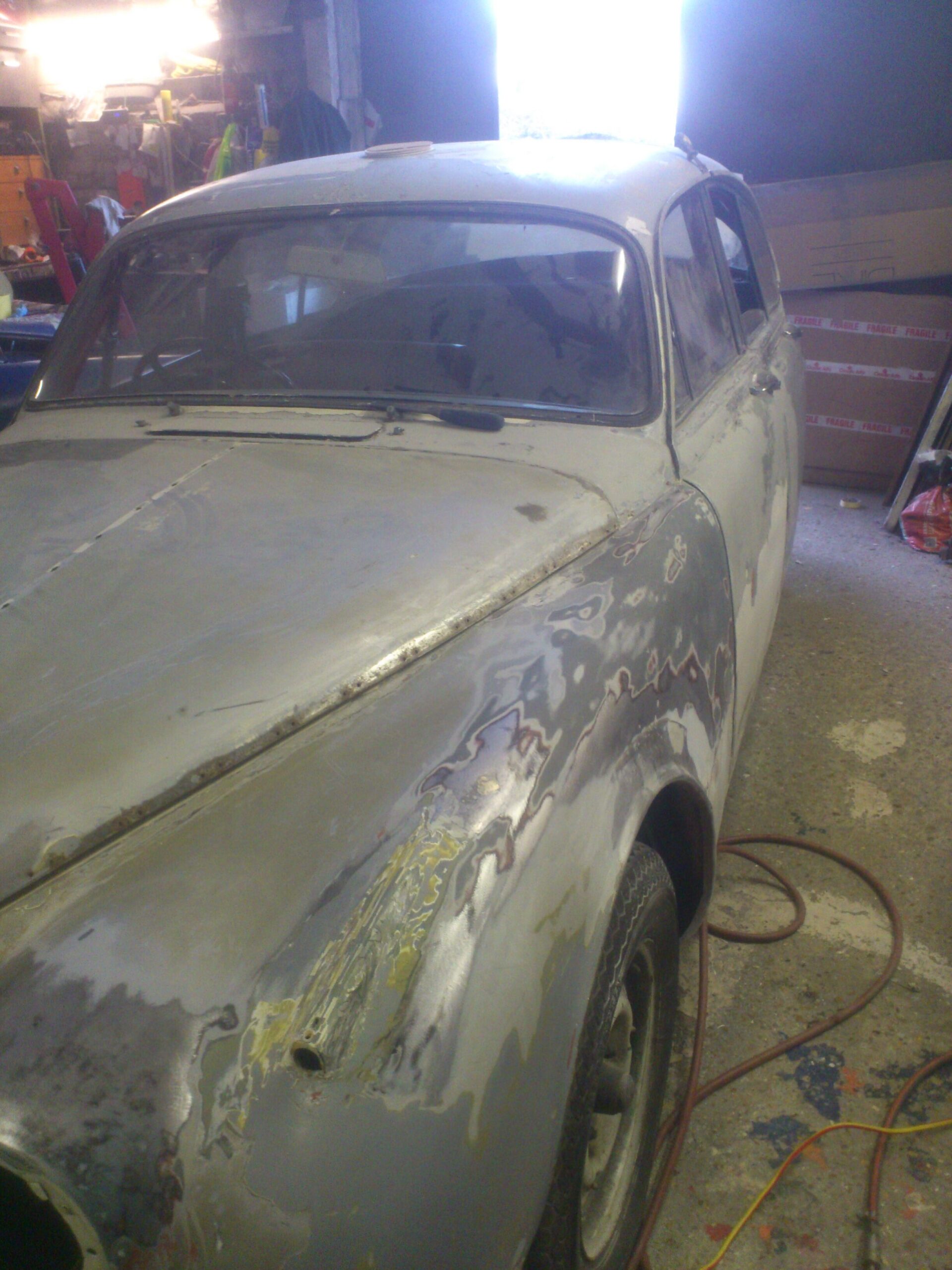
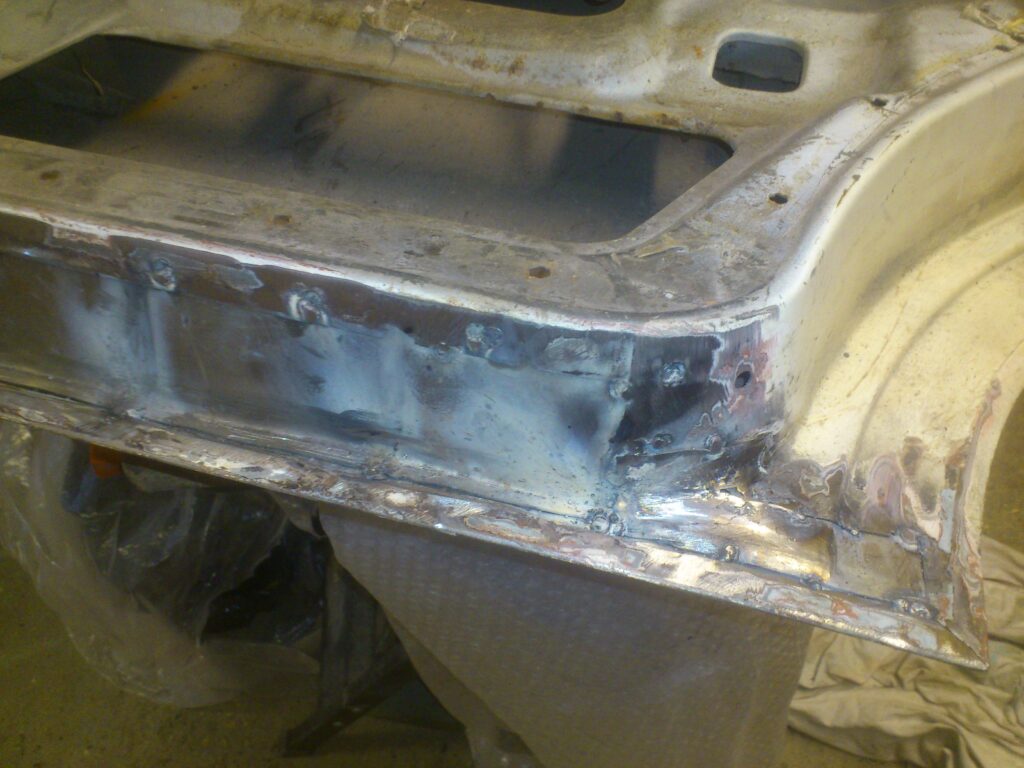
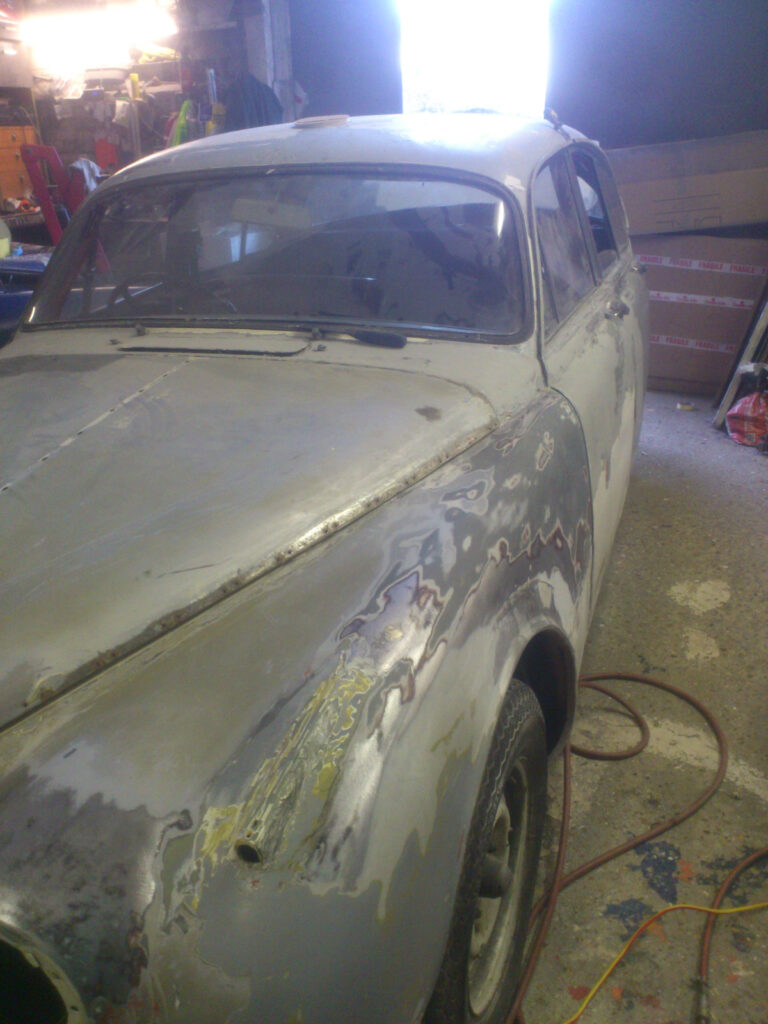
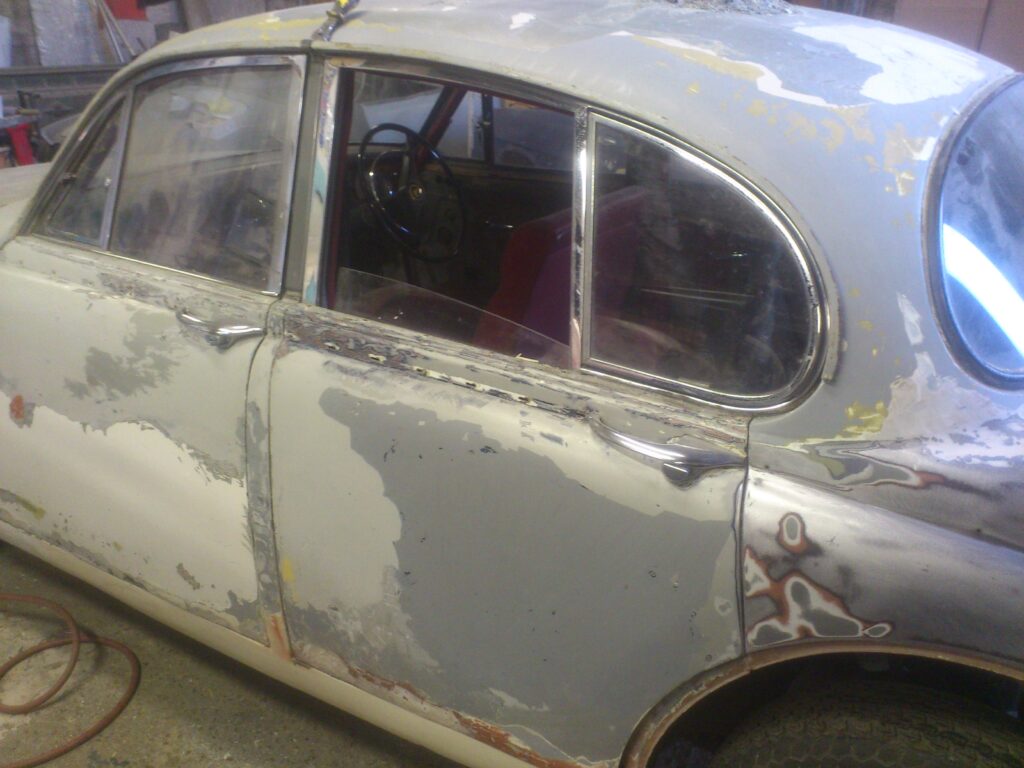
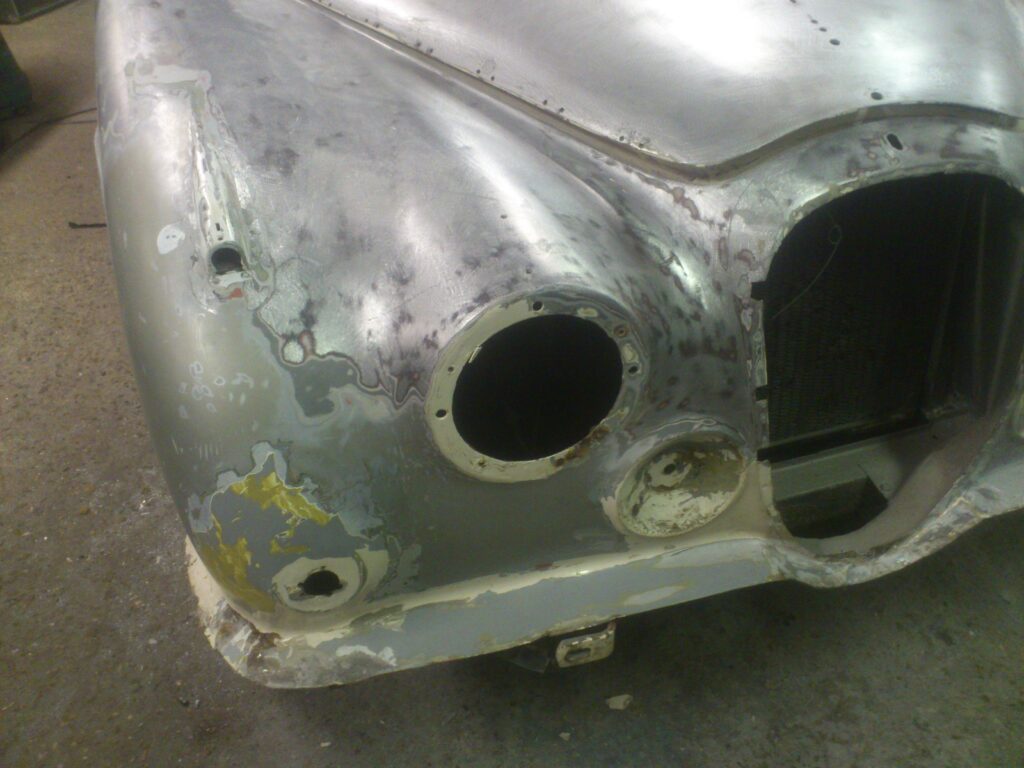
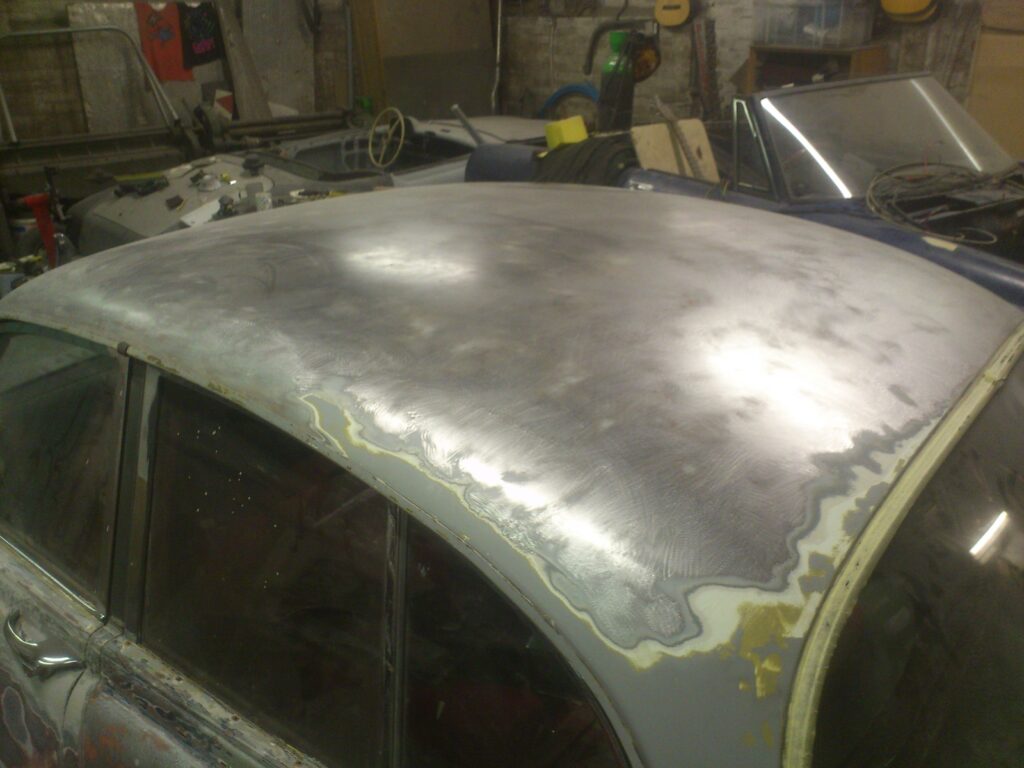
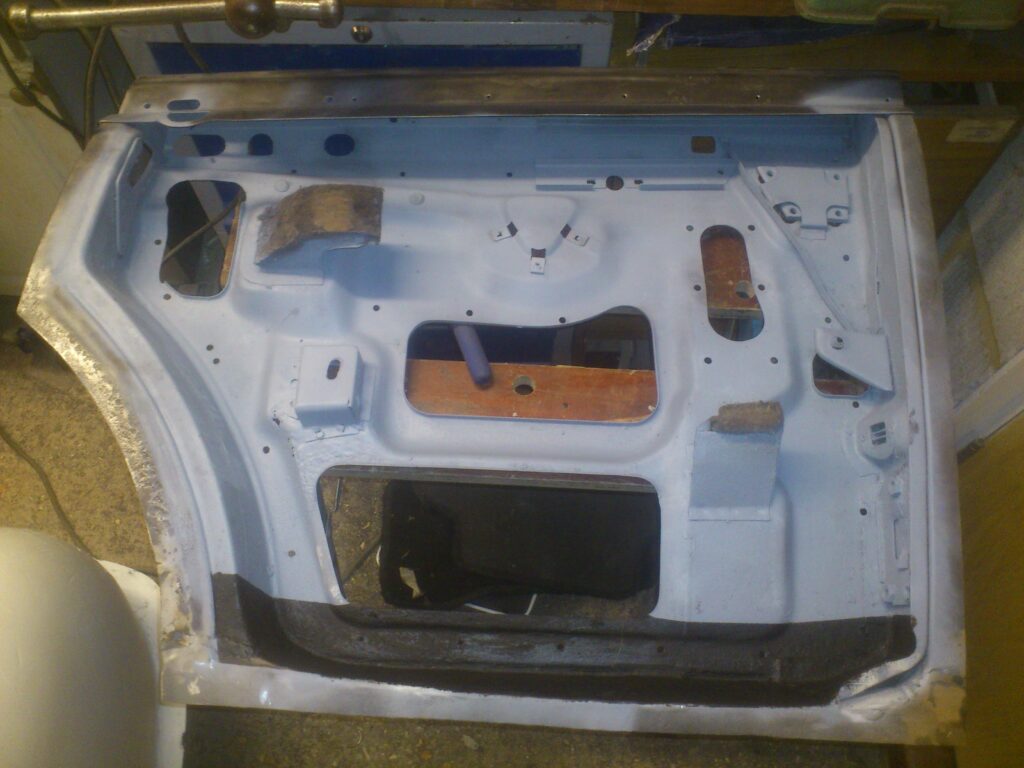
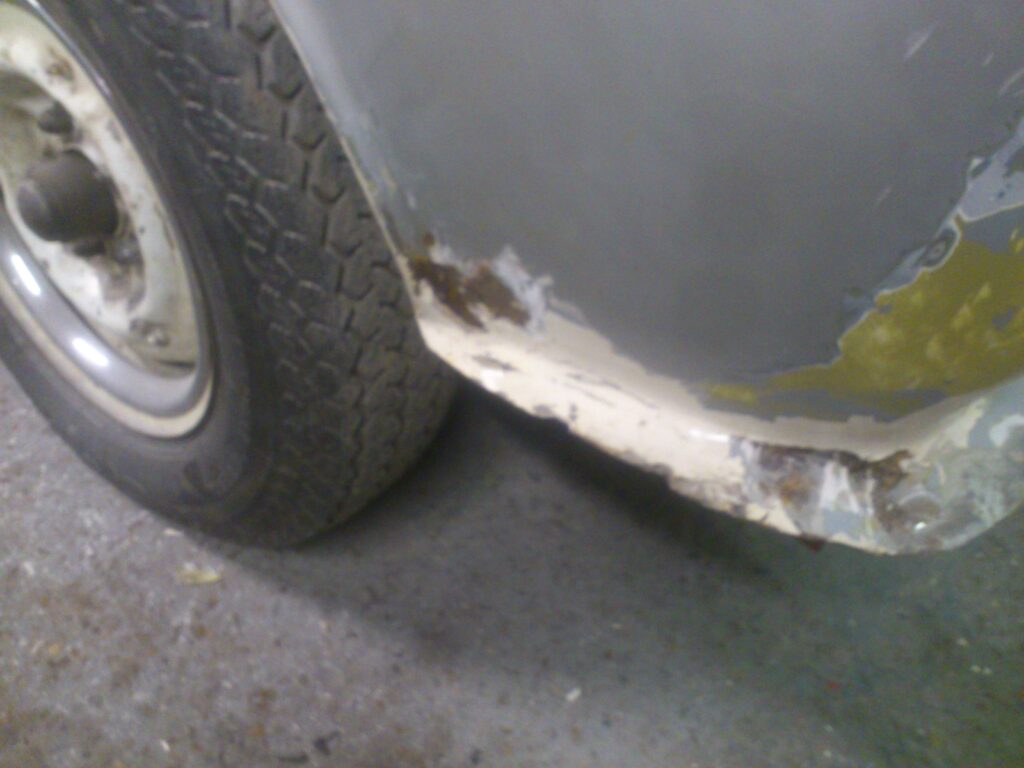
The above pictures are showing work done prior to being restored by Quest brothers. The door skins were replaced by Quest brothers and new metal was welded into areas that had been filled such as the bottoms of the front wings behinfd the bumpers. A new rear valence was fitted to replaced the patched one. New sills on both sides were also fitted to replaced the patched ones.
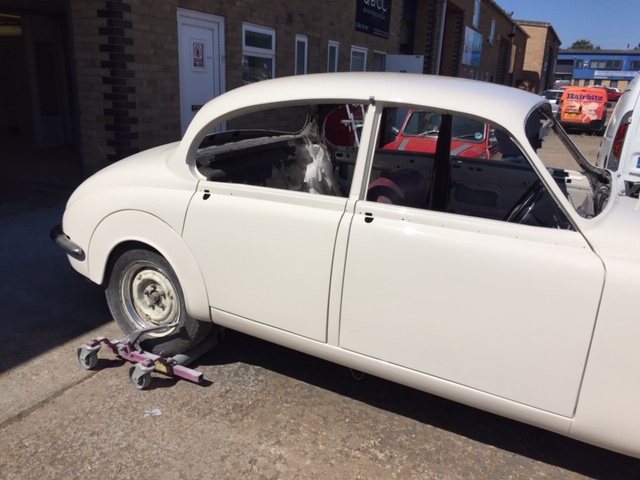
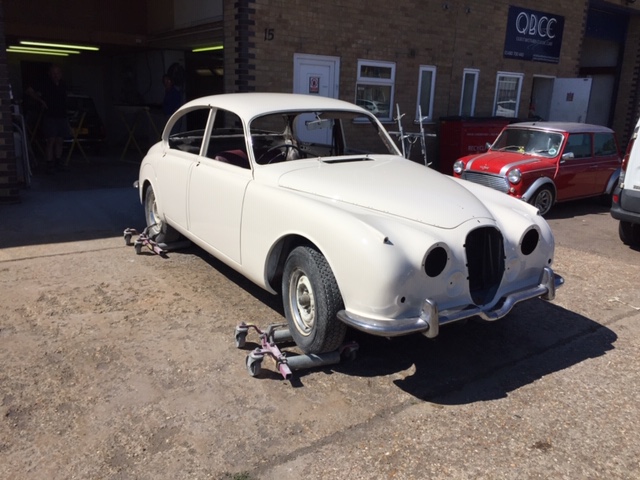
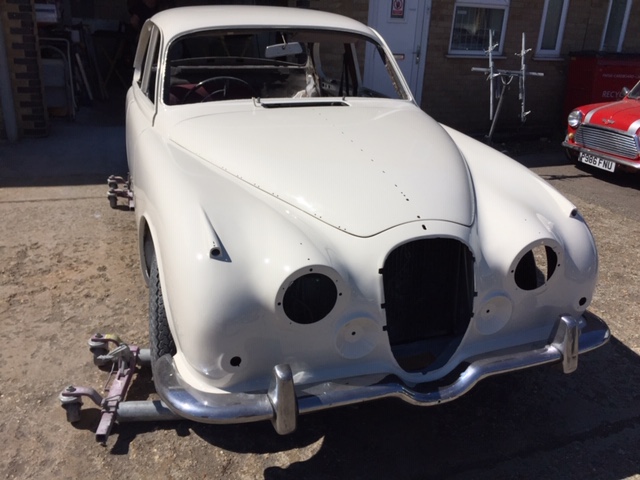
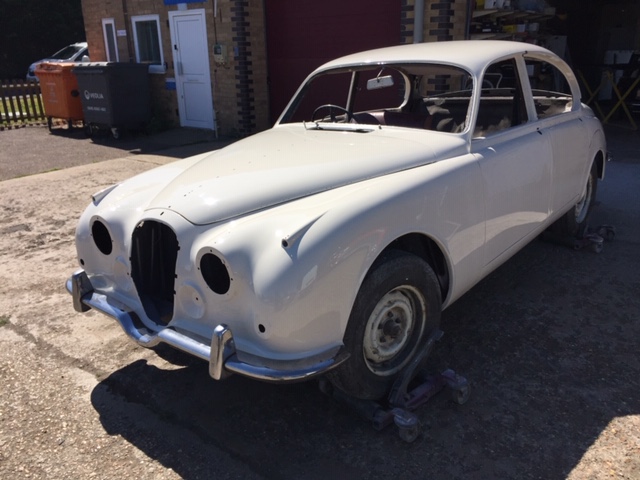
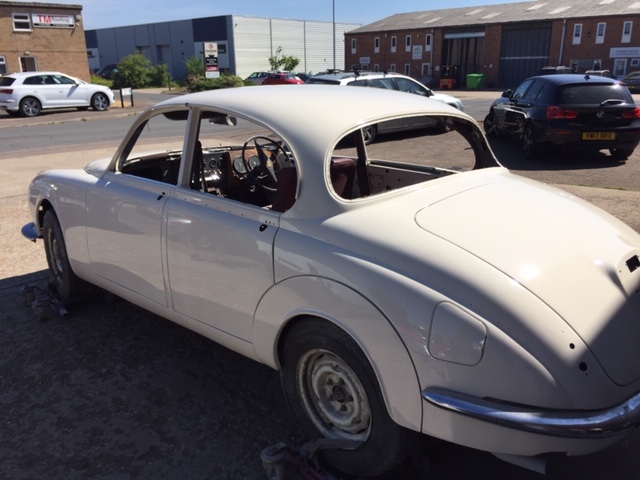
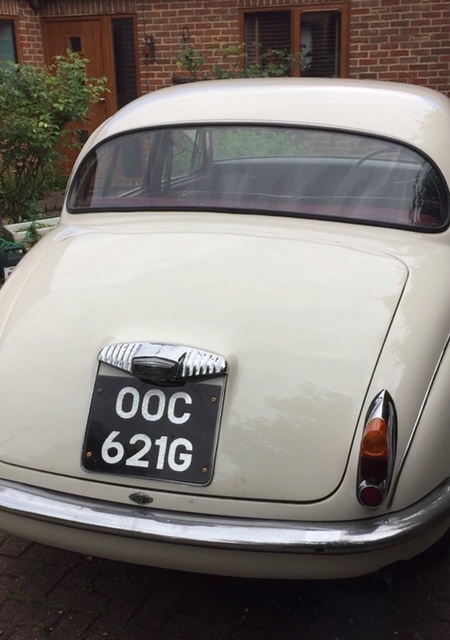
Bodywork
This was by far the most time consuming and expensive part of the rebuild with major work being carried out by Quest Brothers of St Ives, Cambridgeshire. Their attention to detail and standards of work were excellent. This became apparent when comparing the work I had done myself and the work they carried out. This resulted in some of my repairs being done again, not because they were not structurally sound but because cosmetically, they did not attain to their standards of work. I initially put the Daimler in another body shop but after receiving big bills without much progress I was forced to pull the plug which was soul destroying. New sills, rear valence, four new door skins were fitted by Quest brothers. I obtained a pair of second Jaguar wheel spats to replace the glass fibre ones that came with the car and these were sandblasted with other items. The fixings for these use countersunk screws instead of Dzus fasterners which can jump out with vibration
Although the car had originally left the factory in a metallic grey colour, it was resprayed in white around twenty years ago and the car is now sprayed with a two pack mixture in Old English White.
The bodywork was finished in June 2018 and I picked up the shiny vehicle and started the long process of refitting body trim and the interior. New stainless steel trim fixings were fitted all round. A lot of the chrome was polished and refitted.
Electrics
Some of the wiring on the Daimler required renewing as the cotton covered insulation had perished where it was exposed. Small loom sections were replaced with the correct colour wiring from a donor loom. Most of the electrical problems were attributed to bad joints within bullet connectors and these were re-soldered and cleaned up. The charging circuit had been tampered with and someone had attempted to fit a warning relay in the circuit which was not needed with the 17ACR Alternator that was fitted.
Brakes
The brake callipers had nearly all seized when I first got the car, much so that it was a a job to get it on to a trailer to bring back to Cambridgeshire. I rebuilt all the callipers with new parts and fitted new brake pipes after buying a flaring and crimping tool kit. Cleaning, painting and rebuilding took considerable time and new pads were to the discs which were in surprisingly good condition. I also rebuilt the brake master cylinder with new seals. The brake servo was making a clunking sound when the pedal was depressed so that was removed, (with a lot of time and swearing) and stripped down and rebuilt. After the brakes were renovated the car was taken for a MOT to which it passed straight away.
Suspension & wheels
The rear springs on the Daimler appeared to be relaxed with age, so they were replaced with a pair of reconditioned ones. New rear shock absorbers were fitted at the same time. The result was that car now stood very high at the rear which did not look correct. New bottom joints and track rod ends were fitted to the front suspension and the metalwork was cleaned and sprayed black. The original steel wheels were sanded down and sprayed silver. These are temporarily in use until a set of wire wheels and hubs are fitted. These wire wheels were bought from a Jaguar breaker, but will need renovation (spoke repairs, sandblasting and powder coating). Along with a set of splined hubs, and “knock on” wheel nuts.
Interior
The interior leather needed a lot of cleaning and moisturising. I was fortunate to track down some leathercloth which was a very close Cherry Red to the interior and I got on with making up new door cards for all the doors. The original hardboard backing had warped so new ones were made using thin plywood. I invented a process of putting pleats in to new leather cloth to replicate the original plastic coverings. The door caps on my Daimler were the pvc covered type, not the wood veneer of earlier Daimler’s so this proved a challenge to cover these in the new material. The wood veneer dashboard was in need of renovation and after a lot of sanding down with fine paper, I found the best finish was obtained by putting coats of linseed oil on and polishing between coats. This process allows for more coats of oil to be added later with stripping down. The central glove pocket was also covered in leather cloth which looked a lot better. I bought a Motalita wood rimmed steering wheel a while back and have intended to fit it, but with the steering being so heavy as standard, I have kept the original steering wheel for the time being. It would also require extensive modification to fit the horn button.
The original carpets were cleaned and refitted although they will be changed at the next spending spree. I have a couple of seat shrouds which were fitted to earlier Daimler V8’s. These cover up the mechanics of the frame.
The headliner was in good condition so I was not happy about removing it before the bodywork was restored and this was masked during the respray. The original Smiths Radio was repaired and wired up. The only problem being this is positive earth and has to be isolated from the body. The heater control cables pass very closely to the radio, so they were covered in heat shrink. Its worth noting the first time I tried the radio, it was tuned to Radio Caroline!
To be continued soon.